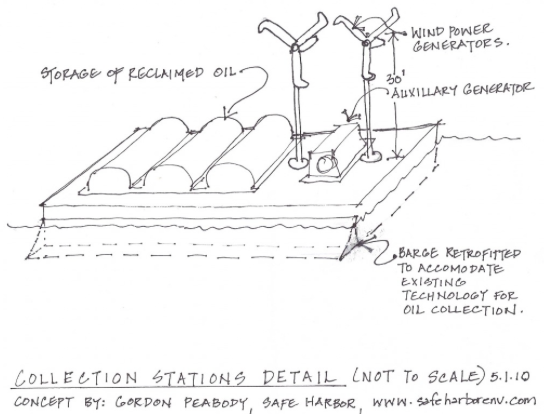MAY 6 UPDATES
Coast Guard contacted us, suggesting our concept was under consideration and being forwarded to Horizon response center at unified command. The amount of oil collected to this point may be equivalent to between one and two day's discharge.
Update: May 06, 2010 | By Richard Fausset and Jill Leovy, Los Angeles Times, and Jim Tankersley, Tribune Washington Bureau
Rick Loomis, Los Angeles Times BP officials Tuesday told congressional representatives that the Gulf of Mexico oil spill could grow at a rate more than 10 times current estimates in a worst-case scenario greatly enlarging the potential scope of the disaster.
Most of the handful of congressional Democrats and Republicans who met with representatives from BP, Transocean Ltd. and Halliburton in a closed-door briefing on Capitol Hill walked away unimpressed.
A source who attended the meeting said that the companies' representatives had a "deer in headlights" look and that the tenor of the conversation was that the firms "are attempting to solve a problem which they have never had to solve before at this depth at this scope of disaster. They essentially said as much."
More than 400 species of wildlife, including whales and dolphins, face a dire threat from the spill, along with Louisiana's barrier islands and marshlands. In the national refuges most at risk, about 34,000 birds have been counted, including gulls, pelicans, roseate spoonbills, egrets, shore birds, terns and blue herons.
To address potential wildlife impacts, BP has contracted with Tri-State Bird and Rescue. If oiled or injured wildlife is spotted, people are urged not to attempt to help the animals but to report them to (800) 557-1401.


